|
By Heather Teater, See the Triumph Contributor
Children today can be impacted by many different types of violence – intimate partner violence between their parents, direct abuse from family members, bullying at school, terrorism and violence in the news, dating violence in their own relationships – the list goes on and on. One area of violence that has been particularly on my mind since beginning my work with students has been the violence that occurs in schools. And I’m not just talking about the tragedies that we see in the news in the form of mass shootings – no one can deny that these experiences are traumatizing, even for those who were not directly involved. The violence that I think about most often is much more commonplace. Children who experience, witness, or participate in bullying, fights, and dating violence need our attention as well. Putting an end to violence in schools is often seen as the responsibility of the school system, and to a large extent this is true. However, in order for true change to happen parents need to be involved in violence-prevention as well. Asking parents to take responsibility for violence in their children’s schools may seem ambitious, silly, even unreasonable, but if every single parent would help their own child(ren) understand the impact and consequences of violence, who would be left to perpetrate or perpetuate the violence? I know this is idealistic and that it is unlikely that we could get every parent to do anything, but why not take responsibility for your part? For those of you who are willing to try, here are a few concrete examples of how to prevent violence in your child’s school: 1) Try to keep your home violence-free. This seems like a suggestion loaded with controversy. I’m not saying that you have to keep your children from watching superheroes in Saturday morning cartoons, but they need to understand the difference between violence on television and violence in real life – a distinction that can be difficult, particularly for young kids. Keeping the discussion about the effects of real violence will be key in deciding whether or not your children are ready to handle watching violence on television. More controversial is the audacity to suggest that anyone chooses to stay in a house of violence - but that’s not what I’m suggesting. I realize that families can be stuck in a situation with domestic violence with no safe option to escape. In those situations it is important to keep a running discussion with your children to let them know that violence is not the answer, even if one parent seems to be demonstrating that to be so. What I am also trying to say is: don’t take violence lightly in your household – don’t punch each other in the arm as a “playful” gesture or spank someone as you walk by. We want our children to understand that being aggressive toward others is not okay in any situation - whether serious or playful. 2) Talk to your children about violence. Let your children know that it’s okay to ask questions or talk about things that they have witnessed/experienced at school. Talking to your kids about bullying and aggressive behaviors that they see at school can be a helpful way to get them talking about what they can do to stop the violence at school. 3) Don’t encourage your children to “fight back” when bullied. The last thing that any of us want is to see those we love being bullied. It can be so easy to fall into the trap of telling your children to defend themselves, especially when we feel that teachers and administrators are not doing enough to prevent/address bullying going on in their schools. But teaching our kids to fight back is teaching them that violence can sometimes be the answer, and we don’t want that kind of gray area in their lives. 4) Seek professional help when your child has any part (the victim or the perpetrator) in school violence. Though we don’t want your children physically fighting back against bullies, we do want to make sure that they are getting the support that they need. Being bullied can be very harmful to your child’s sense of self-worth and bullying others can be a sign of a deeper emotional hurt going on with your child. 5) Encourage other parents to do the same. Talk to the parents of your children’s friends - see what they are doing to help prevent violence in school and bounce some ideas off of each other. If they haven’t thought at all about violence-prevention, give them some suggestions and let them know the importance of helping their kids be a part of the solution. 6) Talk to your local school districts to see how you can be involved in preventing violence in your schools. Some schools already have initiatives in place to help prevent and eliminate violence. See if your school districts need help implementing or continuing these initiatives. If they don’t have any programs in place, see how you can help them develop one! Preventing violence in schools is no easy task, but if we all band together and do our part we can feel safe sending our kids to school once again. By Christine Murray, See the Triumph Co-Founder
Elementary, middle, and high schools can play a powerful role in promoting safe, healthy relationships in students’ lives. Recent years have brought an intense focus to issues related to school safety, especially in the wake of the tragic school shootings that have made the news. In response to these events, many schools have taken a deeper look at their security procedures. For example, many schools practice lockdown drills so that teachers can train students in what to do in the event of a school shooting or other serious emergency situation. A focus on school safety can move beyond these measures toward a more comprehensive focus on fostering safe, healthy relationships, among students, between students and their teachers, and in the home lives of students. In addition to becoming equipped to respond to students who are known or suspected to be living in violent homes, as we’ve addressed in a recent blog post, school personnel can be proactive to foster school climates that promote safety at every level. This proactive approach aims to prevent future violence, create a culture that does not tolerate violent or abusive behaviors, and build a community of students, faculty, and staff who intentionally act in ways that foster safe and peaceful relationships. What does this climate look like? Every school is unique, so it’s likely that each school’s needs and goals for fostering this safety-focused climate will vary. However, the following list includes some goals and strategies that schools may work toward in fostering a school climate that promotes safe, healthy relationships. Can you envision the type of school described below?
The strategies listed above are just a sampling of the ways that schools can work toward fostering a climate of safety and nonviolence. Working toward this climate requires “big picture” thinking that leads to creative strategies that meet the changing needs of diverse student populations and their families. Because of the amount of time that students spend at school and involved in school-related activities, schools have a powerful influence on the lives of students. This influence can be channeled toward helping create students who are informed, engaged students who learn how to promote safe, nonviolent lives and relationships. 9/5/2015 The Power of Sex EducationBy Jean Workman, MA, See the Triumph Guest Blogger and Director of Development for SHIFT NC She timidly raised her hand and with a very shy and quiet voice asked, “So am I still considered a virgin if I was raped by my mother’s boyfriend a few years ago?” With as much compassion as I could muster, I replied, “Yes sweetheart, your virginity is yours to own and when someone takes away the choice of sex, you still own your body and your virginity.” As an adolescent sexuality educator, I have heard this story too many times while teaching sexuality education to 7th and 8th grade girls. Too often. a middle school girl’s question in class is the first time she has admitted to anyone that she was sexually abused and is the door opener to advocacy on her behalf. It’s one of the reasons why I believe sexuality education should be free of shame, guilt, and fear and is imperatively important in our middle and high schools across North Carolina and the nation. As John Oliver recently explained in his conversation on sexuality education on Tonight with John Oliver, “There is no way we’d allow any other academic program to consistently fail to prepare students for life after school and human sexuality, unlike Calculus, is something you actually need to know about for the rest of your life.” (Oliver, 2015) Sexuality education is far from just teaching about sex. It includes information on the importance of having a strong self-esteem and provides tools for how young people can own their assertive voice for communicating their wants, needs, and desires. This is important not just for sexual relationships and intimacy, but also in friendships, where having an assertive voice can help them navigate the prickly road of saying what they mean and standing up for themselves in peer pressure situations. Comprehensive sex education includes decision-making skills so that young people can strengthen their ability to listen to that gut instinct that tells them when a situation is dangerous or inappropriate. It’s a practice makes perfect scenario, and quality sex education provides a safe practice space for negotiating those necessary skills. These skills allow young people to practice owning their assertive voice for healthy communication. Creating a safe space for learning is vital to the topic of human sexuality. Young people need to feel they can talk openly with one another and their instructor without fear of gossip, judgment, shame, or guilt. This safe space is crucial for young people who have experienced past sexual traumas, as sexuality education often opens doors for adolescents to share past sexual experiences, including non-consensual experiences. Darkness to Light (D2L), one of our nation’s leading resources on child sexual abuse awareness and prevention, has championed the movement to end child sexual abuse since its founding in 2000. According to D2L the risk of teen pregnancy is much higher for girls with a history of child sexual abuse, most likely due to over-sexualized behavior, another common consequence of child sexual abuse. (http://www.d2l.org/). Comprehensive sexuality education is an important piece to the teen pregnancy prevention story throughout our nation. North Carolina’s teen pregnancy rate has dropped 67% since its highest peak in the early 1990s. It opens doors for assertive communication, builds awareness about resources adolescents and young adults can use and increases knowledge about the sexual and reproductive health system. It also links young people to resources when the choice of sex has been taken from them and they desperately need an advocate to help illuminate their voice. This education is a powerful tool that adolescents will use well into adulthood. As a mother of two adolescents, my mantra for raising sexually responsible adults is to inspire the vision that their sexuality and the sexuality of their future partner is powerful, extraordinary, and worth protecting. As Maya Angelou said, “People often forget what we say and forget what we do, but they will never forget how we made them feel.” Comprehensive sexuality education that is free of shame, guilt, or fear creates a magical melody that inspires that vision that young people are powerful, extraordinary and worth protecting. What other melody could we possibly want for our children to embrace with regards to their sexuality? Oliver, J. (2015). Last Week Tonight with John Oliver: Sex Education (HBO) https://www.youtube.com/watch?v=L0jQz6jqQS0 For over 20 years, Jean has shared her enthusiasm for inspiring competence, confidence, and connectedness with young people and creating magical classroom experiences on the local, state, and national level. She is the co-author of several nationally-recognized, award-winning, research-based sexual health, teen pregnancy prevention, and parental involvement curricula. Jean has a BS in Community Health Education from UNC Greensboro and an MA in Nonprofit Management from High Point University. In her spare time she teaches a Human Sexuality course at Guilford College, coaches her daughter’s elementary cheerleading squad, and enthusiastically cheers at her middle school son’s sporting events. She has lived in NC all of her life and resides in Greensboro with her partner and two children.
9/3/2015 A Message To Teachers: What To Do If You Know Or Suspect A Student Is Living In A Violent HomeBy Christine Murray, See the Triumph Co-Founder
As we continue our “back-to-school” focus this month at See the Triumph, it’s important to address how teachers and other school personnel can respond if they know or suspect a student in their school or classroom is living in a violent home. This includes children who are experiencing violence or abuse directly, such as through physical, sexual, and/or emotional child abuse and/or neglect, as well as children who witness domestic violence involving their parents. Other forms of family violence also may impact children, such as sibling abuse or witnessing elder abuse if they’re living with elderly family members. Of course, other forms of non-family-related violence may impact children in schools, such as bullying, street violence, or gang violence. In this message, my main focus is on how teachers and other professionals working in schools can help students if they learn or suspect that their students are experiencing violence in their families or homes. The following list offers some basic suggestions for teachers or other school personnel when faced with this situation. Every situation is unique, however, so if you are in this situation, be sure to consult with local organizations in your community, as well as to follow any relevant laws and regulations within your state or organization. 1. First, make safety your top priority. Safety is a basic human need. Consider Maslow’s Hierarchy of Needs: Safety needs are among the most basic, fundamental human needs. In violent situations, safety must become a top priority. This relates to the safety of your student, their family, other students and professionals working in your school, and yourself. Any actions you take in response to the known or suspected violence should be considered through a safety lens to decrease the likelihood that the steps you take could bring safety risks for anyone involved. 2. Second, trust your intuition. Violence in a family is often shrouded in secrecy. A child who has been abused or witnessed abuse may have been threatened to not tell anyone about what they have experienced or heard. Victims of abuse also may carry a lot of shame about their experiences, and it can be very difficult to admit what has happened. Students who’ve experienced this type of violence may even lie to further hide their experiences. Therefore, anticipate that a student who is experiencing violence in their home may not disclose this to you, even if you ask them about it directly. You may have a sense that something is “off” with a student you know, or you may simply be suspicious that something is going on with them, but you don’t know yet exactly what it is. Although there may indeed be nothing going on, if you start to have some sort of intuition that a student you know is impacted by violence, trust that intuition as a sign that the situation needs attention. If you work directly with students and see them daily, you are in a prime position to notice if anything changes--so, remain open to what your intuition is trying to tell you. 3. Related to #2, it’s important to be alert to possible signs that a child may be experiencing abuse, and take them seriously if you notice them. Two useful resources for learning more about the signs of abuse are available through the Mayo Clinic and HelpGuide. Some signs are more obvious than others, such as inconsistent stories about the source of bruises or injuries, or direct statements about the abuse. However, many of the indicators of abuse are more subtle and need to be considered in light of the child’s history, past functioning, and other issues going on in their lives. For example, a child may seem to begin to lose self-confidence. This could be a result of violence, but there are many other possible factors at play (e.g., struggling with difficult subject matter at school, and illness in the family, or perceived difficulties at a favorite activity or hobby). Therefore, it’s important to be alert for signs of possible violence, but also to consider any possible signs as part of an overall picture of what’s going on in the student’s life. Also, remember that some children can experience abuse, but not demonstrate any outright signs or effects of that abuse. 4. Document any signs of abuse that you notice over time. Unless there are organizational policies that prohibit this type of documentation, it can be extremely useful to document any potential signs of abuse that you notice over time. Not only can this information be extremely valuable if you need to make a report to Child Protective Services (see #5 below), this documentation also can be extremely valuable to identifying patterns over time and building a history that can help you piece together your observations the could be indicative of abuse. A single possible indicator of violence or abuse can be very difficult to decipher, but a documented history that demonstrates a series of patterns over time can help you to remember all of the signs you’ve noticed. This can then help you put together the pieces of the puzzle so you’ll be in the best position to help and support the student in becoming safe. 5. Be sure to follow any relevant laws, professional ethics, and organizational policies. A full discussion of the relevant legal, ethical, and organizational issues surrounding children’s abuse and neglect within a school setting is beyond the scope of this blog post, and it’s important for you to become knowledgeable about any specific guidelines or regulations that you are required to follow by virtue or your location, professional affiliations, and workplaces. Nonetheless, one of the main issues to consider when discussing the issue of family violence for school-age children is whether and when a report needs to be made to Child Protective Services. Again, teachers and other school personnel should familiarize themselves and follow the laws of their state, as these laws do tend to vary to some degree between states. The decision as to whether and when to report known or suspected child abuse or maltreatment is a complicated one, to be certain. However, for the most part, it is wise to adopt a cautious approach, meaning that when there is sufficient reason to suspect possible maltreatment, it is important to make that report. The specific types of maltreatment that must be reported can vary from state to state, but it’s important to note that minor children witnessing parental domestic violence or other abuse in the home is often considered a form of child neglect, and therefore is often required to be reported to Child Protective Services. Other relevant legal, ethical, and organizational issues that should be addressed include maintaining appropriate confidentiality and professional boundaries, child custody issues (if applicable), and educational privacy, especially when communicating with other professionals about the student’s situation. 6. Consult with other professionals. Because of the complexity of these situations, if you know or suspect a child is experiencing violence or abuse, be sure to consult with other professionals who are knowledgeable to support you in making the most appropriate decisions related to the case. Within a school setting, you should notify your supervisor and follow any guidelines they offer. In addition, it can be extremely useful to consult with specialized professionals in your area who work to address domestic violence and/or child maltreatment in your community. Be sure to document any conversations you have so that you’ll have a timeline of events, as well as documentation of the outcomes of these conversations, especially if you ever need that information in the course of a Child Protective Services or other legal investigation. 7. Determine whether it is safe and appropriate to discuss your concerns directly with the student and/or any involved parents or guardians. Sometimes, a direct discussion about known or suspected is not safe. Furthermore, if abuse is occurring, it is best to avoid asking leading questions that might eventually compromise an investigation of abuse, such as by providing a young student with language to describe their abuse that could be used against them in court proceedings. Therefore, if you know that an investigation is underway, or you suspect that one may be soon (e.g., if you have just made a Child Protective Services report), be sure to consult with the investigator to learn whether there are any restrictions as to what or how you should talk with the student. However, at other times, a direct discussion with the student and/or their family members may be warranted. If this is the case, be sure to have this discussion in a safe location, and avoid any direct accusations. Rather, you might say, “I’m concerned about you. I wanted to talk with you to find out what, if anything, has been going on with you lately, and how I can help you.” Or, you might focus on a specific sign that you’ve noticed and say something like, “I’ve noticed that your grades lately haven’t been where they usually are. Sometimes that happens if a student is going through challenges in their lives. So, I was curious what might be behind your grades dropping lately.” Try to keep this conversation as concrete and specific as possible, and be sure to express your concern in a compassionate, caring manner. 8. Mobilize your school’s resources to help provide support and resources to the student and their family. Consider what other resources or people in your school might be able to provide some support to the student and/or their family. For example, a school counselor may be able to offer some brief counseling to help the student enhance their self-esteem and build coping resources. A school social worker may be available to help coordinate the student’s case if other community systems become involved. Also consider creative resources that may be available through your school. For example, your school library might have books available about helping kids talk about difficult situations. An extracurricular activity might provide an opportunity for the student to build friendships and self-confidence. Together with other professionals in your school, consider what resources could help to promote the safety and well-being of the student. 9. Link the student to resources in your community. Even if you don’t know any students currently who are facing violence in their homes, take some time to learn about the resources available in your community that address violence and abuse. There are a variety of different types of resources, and every community is likely to offer a unique set of resources. Resources that you might find available in your own community include the following:
10. Remain supportive and non-judgmental. Remaining non-judgmental is one of the core steps we at See the Triumph suggest when helping someone who has been abused. We’ve learned through our research that people who have experienced violence often experience a great deal of stigma, blame, and judgement, and this stigma can make it even more difficult for people to come forward and reach out for help. As an important adult in your student’s life, you can can make a huge impact on their life by helping them feel accepted, validated, and supported, even as they face a very difficult situation in their lives. Even if you need to take difficult steps to address known or suspected violence in students’ homes (e.g., making a Child Protective Services report), do your best to take these steps in a way that is respectful and sensitive to the unique needs of your student and their family. Addressing known or suspected violence within a school setting is inherently complex, and every situation is unique. However, teachers and other school personnel can be proactive and prepare themselves to respond appropriately to these students, with the ultimate goal of promoting students’ safety, well-being, and academic success. The steps included here are certainly not an exhaustive list, as a variety of other needs and concerns can arise in any given situation. However, we encourage teachers and other school personnel to commit to making safe, supportive, and appropriate decisions when working to support students whose lives have been impacted by violence in the home. |
Archives
April 2024
CategoriesAll About Intimate Partner Violence About Intimate Partner Violence Advocacy Ambassadors Children Churches College Campuses Cultural Issues Domestic Violence Awareness Month Financial Recovery How To Help A Friend Human Rights Human-rights Immigrants International Media Overcoming Past Abuse Overcoming-past-abuse Parenting Prevention Resources For Survivors Safe Relationships Following Abuse Schools Selfcare Self-care Sexual Assault Sexuality Social Justice Social-justice Stigma Supporting Survivors Survivor Quotes Survivor-quotes Survivor Stories Teen Dating Violence Trafficking Transformative-approaches |
Search by typing & pressing enter


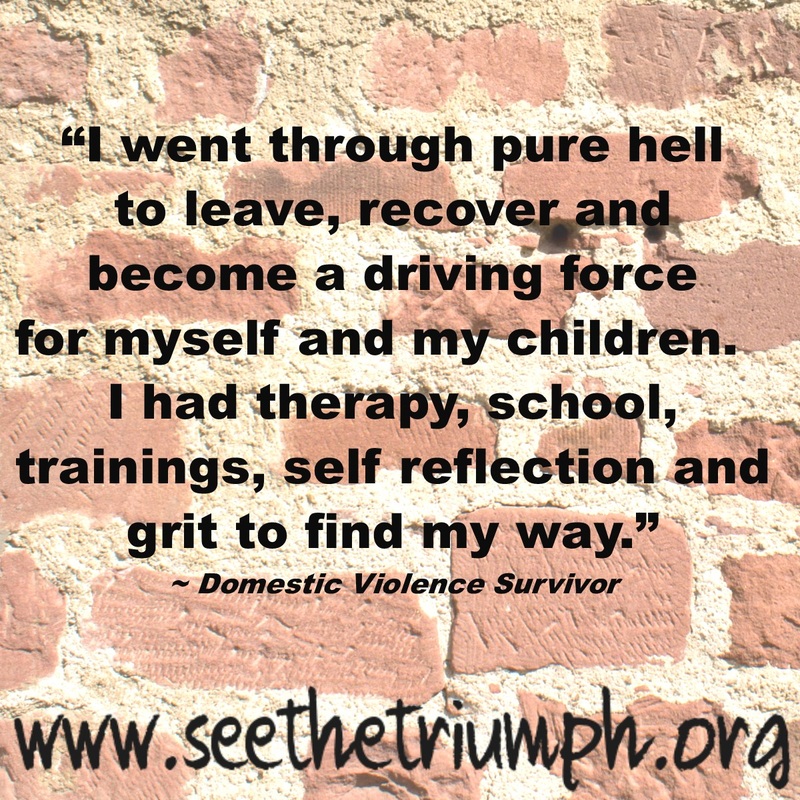
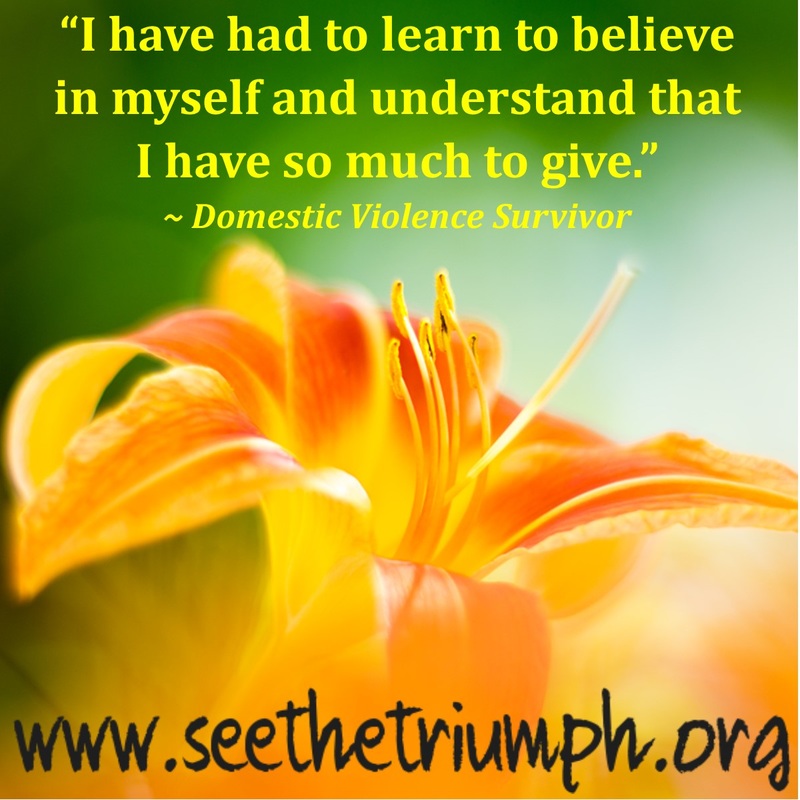
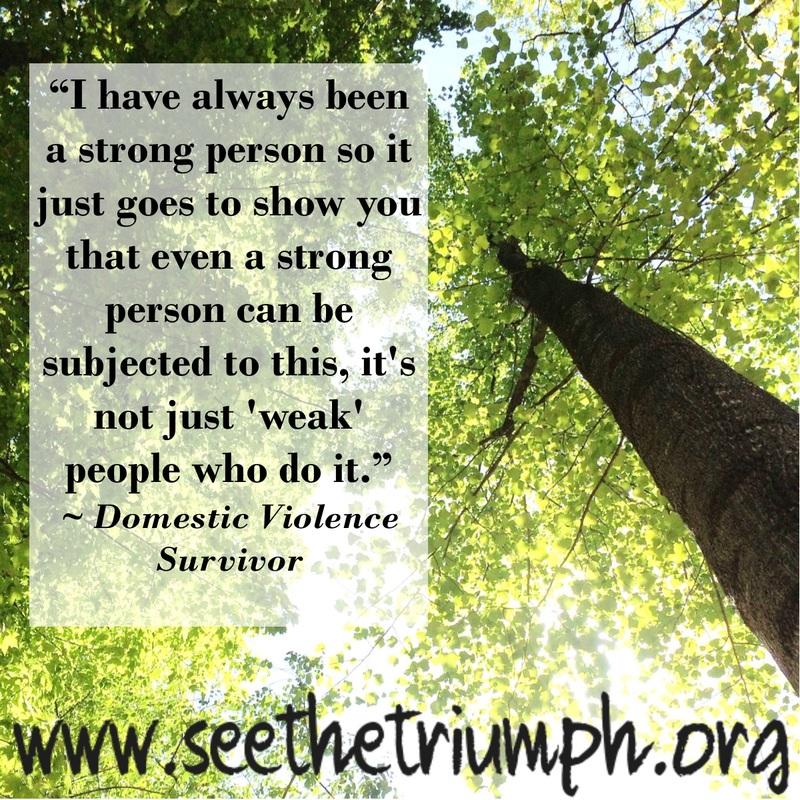
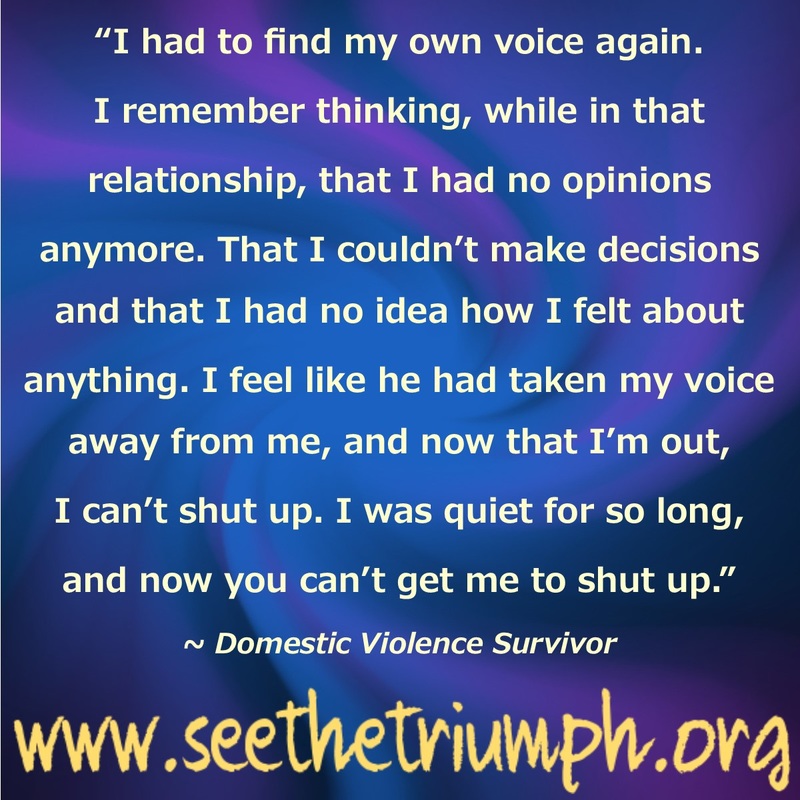
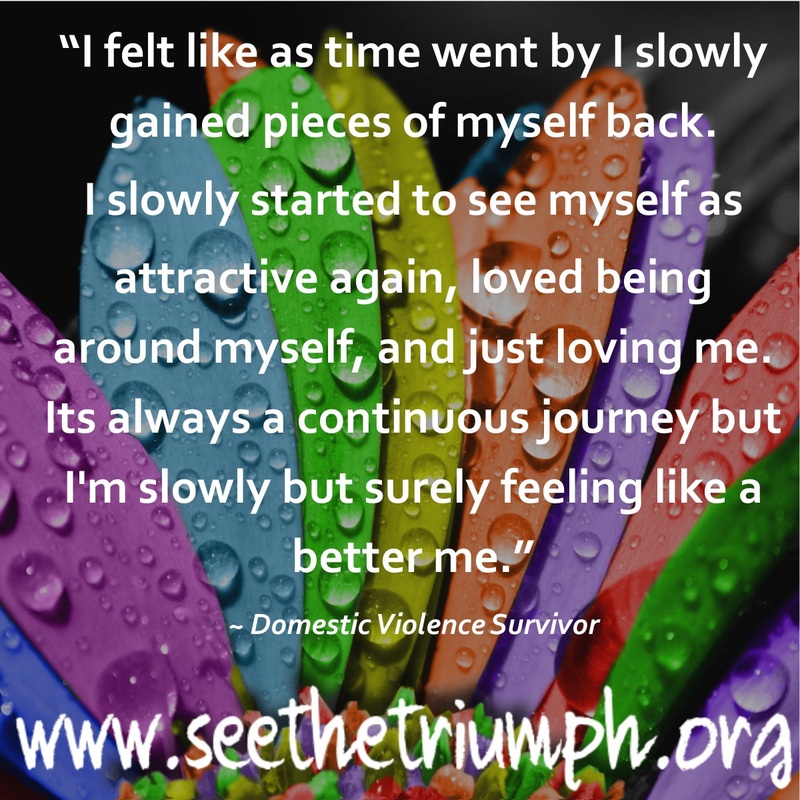
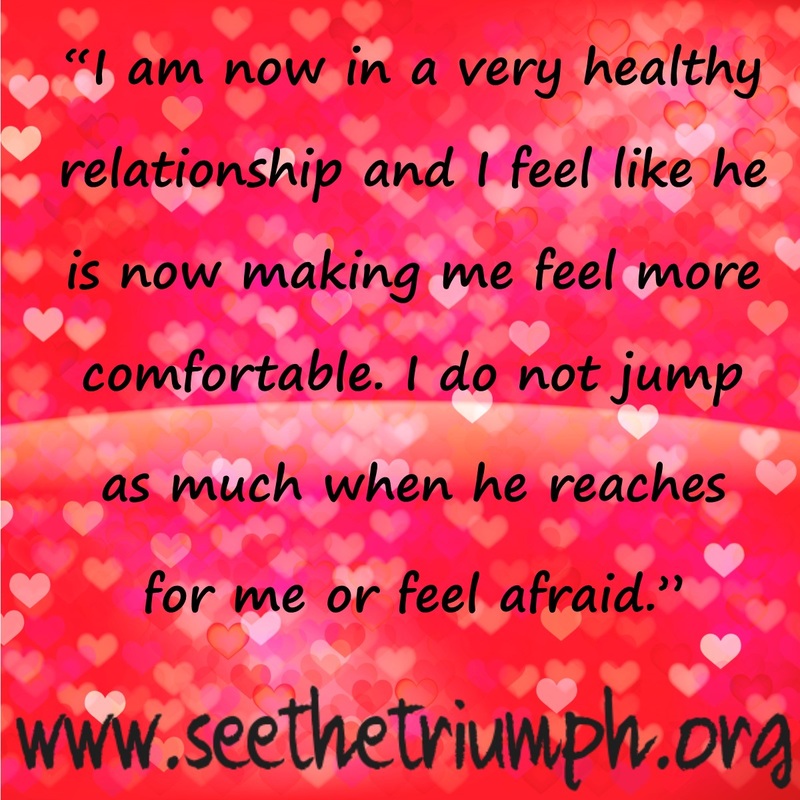
 RSS Feed
RSS Feed